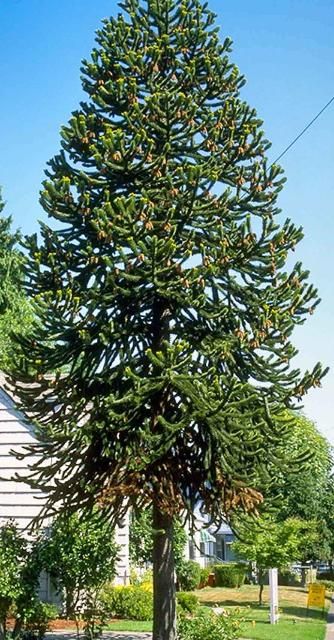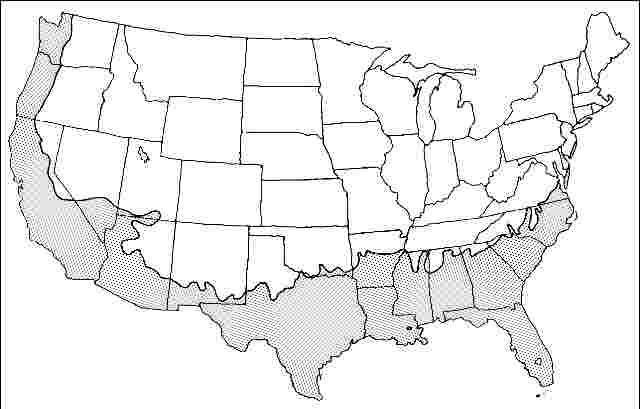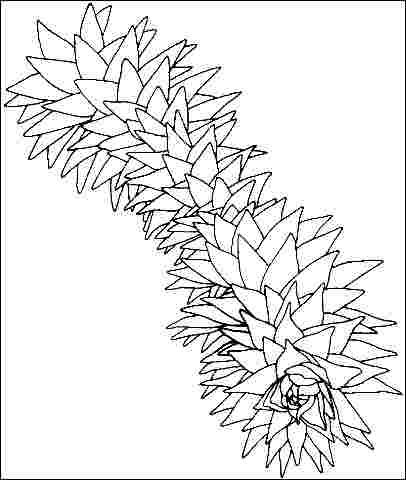Introduction
Monkey puzzle tree is a large, bizarre evergreen, 60 to 70 feet tall and 30 to 35 feet wide, which forms a loose, see-through, pyramidal shape with a straight trunk. The tree is so open in habit you could almost look at it and not see it. The leaves are dark green, stiff, with sharp needles densely arranged on horizontal, irregular, upwardly sweeping branches. Monkey puzzle tree makes an attractive, novelty specimen for a large, open yard or commercial landscape. It is normally planted only as an oddity someplace in the rear of a landscape out of view from most passers-by but could be the specimen feature in a large oriental landscape.

Credit: Ed Gilman
General Information
Scientific name: Araucaria araucana
Pronunciation: air-ah-KAIR-ee-uh air-ah-KAY-nuh
Common name(s): Monkey puzzle tree
Family: Araucariaceae
USDA hardiness zones: 7B through 11 (Fig. 2)
Origin: not native to North America
Invasive potential: little invasive potential
Uses: indoors; specimen
Availability: not native to North America

Description
Height: 60 to 70 feet
Spread: 30 to 35 feet
Crown uniformity: irregular
Crown shape: pyramidal
Crown density: open
Growth rate: moderate
Texture: coarse
Foliage
Leaf arrangement: spiral (Fig. 3)
Leaf type: simple
Leaf margin: entire
Leaf shape: ovate, lanceolate
Leaf venation: parallel
Leaf type and persistence: evergreen, needled evergreen
Leaf blade length: less than 2 inches
Leaf color: green
Fall color: no color change
Fall characteristic: not showy

Flower
Flower color: unknown
Flower characteristics: not showy
Fruit
Fruit shape: oval, cone
Fruit length: 3 to 6 inches, 6 to 12 inches
Fruit covering: dry or hard
Fruit color: brown, tan
Fruit characteristics: does not attract wildlife; not showy; fruit/leaves not a litter problem
Trunk and Branches
Trunk/bark/branches: branches droop; not showy; typically one trunk; thorns
Pruning requirement: little required
Breakage: resistant
Current year twig color: green, brown
Current year twig thickness: medium, thick
Wood specific gravity: unknown
Culture
Light requirement: full sun
Soil tolerances: clay; sand; loam; acidic; alkaline; well-drained
Drought tolerance: moderate
Aerosol salt tolerance: unknown
Other
Roots: can form large surface roots
Winter interest: no
Outstanding tree: no
Ozone sensitivity: unknown
Verticillium wilt susceptibility: unknown
Pest resistance: resistant to pests/diseases
Use and Management
Monkey puzzle tree should be grown in full sun on well-drained soil and receive regular waterings. It tolerates some drought and will grow well in clay soil.
Pests and Diseases
No pests or diseases are of major concern. Scales, sooty mold, leaf spots.